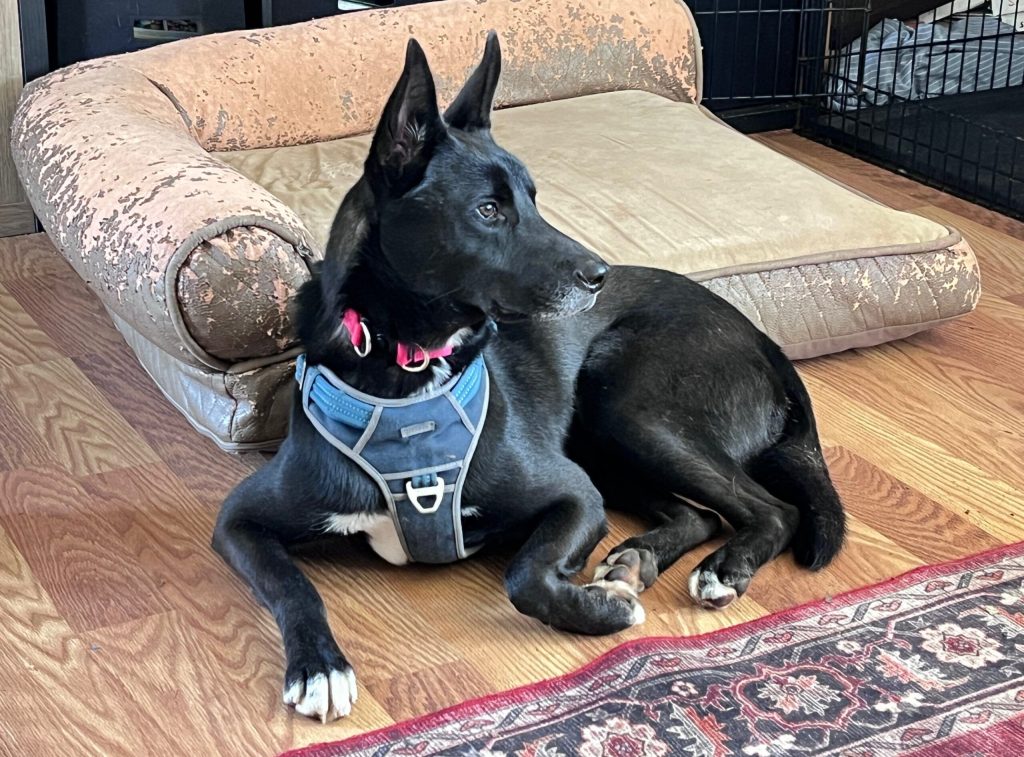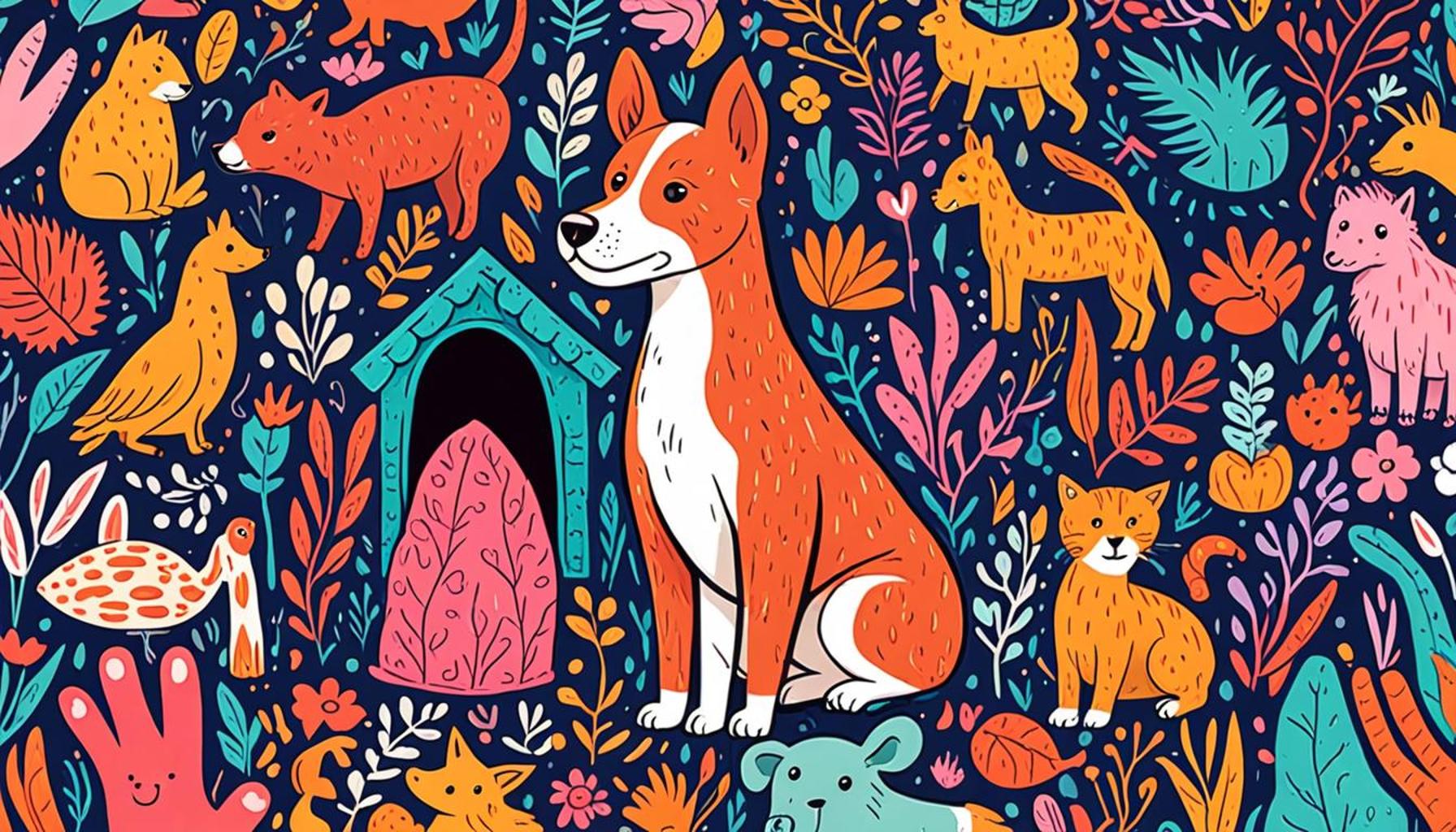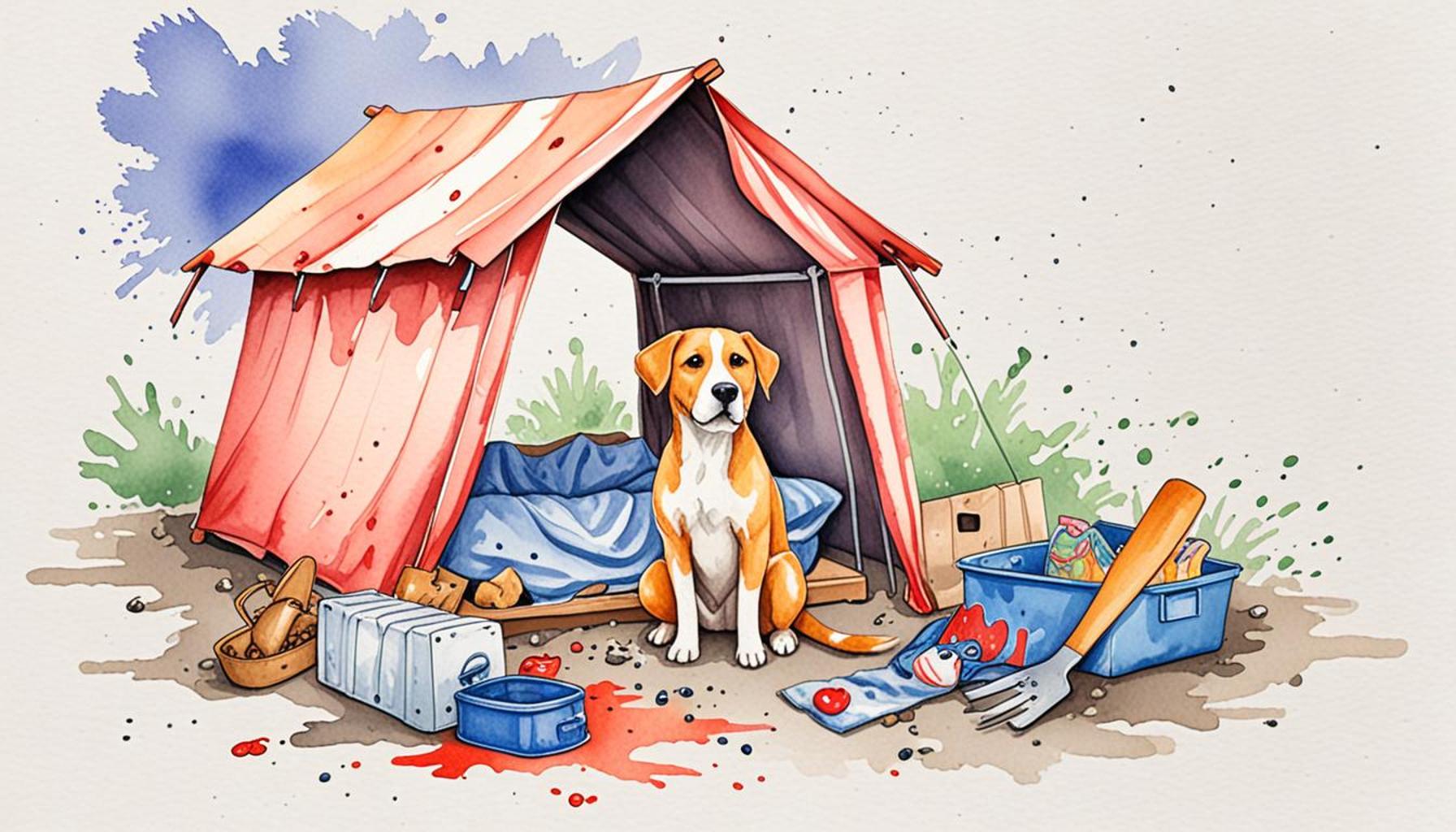Demystifying Pet Adoption: What to Expect and How to Prepare to Welcome a New Friend

The Pet Adoption Journey
Welcoming a new furry friend into your home is not only an exciting venture, but it also presents a unique blend of challenges and responsibilities. Pet adoption goes beyond simply finding a companion; it’s about embarking on a transformative journey that changes both your life and that of the animal you choose to adopt. Understanding the intricacies of pet adoption is essential for a smooth transition into pet parenthood.
In the United States, the need for loving homes is staggering, with an estimated 6.5 million companion animals entering shelters each year, according to the ASPCA. This statistic illustrates the pressing need for adoptive homes and the impact that adopting a pet can have. Here’s what you can expect throughout this rewarding process:
- Adoption Process: Typically, the adoption process begins with filling out an application form that asks about your lifestyle, living arrangements, and why you want a pet. Some shelters may even conduct home visits to ensure that the environment is suitable. Additionally, an interview may be conducted to assess your readiness and to provide guidance tailored to your new pet’s needs.
- Choosing the Right Pet: It’s essential to consider several factors when selecting a pet. For instance, young puppies may require more time and training compared to an older dog that may be more settled. Similarly, adopting a high-energy dog like a Border Collie might not be suitable for someone with a busy lifestyle or limited outdoor space. Assessing breed temperaments, the animal’s health history, and any special needs will also help you make an informed decision.
- Transition Period: Adopting a pet often involves a transition period in which both you and your new companion acclimate to each other. This can take anywhere from a few days to several weeks, depending on the animal’s background. During this time, patience and consistency are key. Establishing a daily routine and understanding your pet’s cues are crucial for fostering a sense of security.
Preparing for pet adoption is about assembling a nurturing environment that will facilitate a successful adjustment. Here’s a detailed checklist to guide you:
- Home Safety: Prioritize pet-proofing your space by securing hazardous materials, removing toxic plants, and ensuring that small objects that could be swallowed are kept out of reach. This safety initiative helps prevent accidents and ensures a stress-free environment.
- Supplies: Before bringing your new pet home, it’s vital to gather essential supplies. Purchase high-quality food, a comfortable bed, engaging toys, and grooming tools. This will not only keep your pet happy but also shows them that they are now part of the family.
- Veterinary Care: Scheduling a check-up with a veterinarian soon after adoption is critical. Ensure that vaccinations are up to date, and discuss spaying or neutering if it hasn’t already been done. Keep a record of medical history, and stay informed about preventive care to maintain your pet’s health.
The journey of pet adoption is rich and multifaceted, presenting both challenges and extraordinary rewards. To fully embrace the adventure ahead, equip yourself with knowledge, seek support from experienced pet owners, and foster a deep sense of responsibility. Each step you take in learning about caring for your new friend enhances your bond and supports your pet’s well-being. Let’s delve deeper into the considerations and best practices that will make this experience fulfilling for both you and your new companion!
DIVE DEEPER: Click here to learn more

Understanding the Adoption Process
The first step in your pet adoption journey is understanding the detailed process involved. Each shelter or rescue organization may have its own guidelines, but the overarching principles are generally consistent. Being informed about what to expect can make the experience smoother and less stressful. The adoption process typically involves several key stages that require your active participation.
Initially, you will need to fill out an adoption application. This vital document serves as a means for shelters to assess your suitability as a pet owner. They often inquire about your lifestyle, living conditions, previous pet ownership experience, and what type of pet you are looking for. Consider this application as your opportunity to showcase your commitment.
Once your application is submitted, the shelter will review it, and many will conduct an interview. This can be an enlightening experience where you can ask questions about the pets available for adoption and receive advice tailored to finding your perfect match. Some shelters may take additional steps, such as home visits, to ensure that you have a safe and welcoming environment for your future pet. In the exciting phase of choosing your new companion, remember that patience is key. Take your time to learn about the different animals available for adoption
Choosing the Right Pet for Your Lifestyle
Finding the right pet isn’t solely about choosing the cutest face; it requires reflection on your lifestyle and the needs of the animal. Different species, breeds, and even individual pets have unique temperaments and requirements. Consider the following factors before making your final decision:
- Energy Levels: Active individuals might thrive with high-energy dogs, such as Labradors or Border Collies, while more laid-back owners might prefer older, calmer pets.
- Time Commitment: Puppies need significant time for training and socialization, whereas adult dogs may settle in more quickly. Assess the amount of time you can dedicate to your new furry friend.
- Space: Your living arrangement plays a crucial role in pet selection. Ensure that you have enough space for larger breeds or an energetic pet that needs room to exercise.
- Allergies and Sensitivities: If you or someone in your household has allergies, consider hypoallergenic breeds or discuss potential allergens with shelter staff.
Once you’ve found a potential pet, it is wise to spend time with them before finalizing the adoption. This allows you to observe their behavior and establish a connection. Sometimes, shelters offer special “meet-and-greet” sessions or foster programs, providing a no-pressure scenario for you to see how well you and your potential pet might interact.
Navigating the Transition Period
After your adoption is finalized, you can expect a transition period both for you and your new pet. This is a crucial time to foster security and build trust. During the first few days, your pet may feel overwhelmed by their new surroundings and might exhibit behaviors such as hiding or reluctance to engage. Creating a calm environment is essential.
Establish routines as soon as possible, including regular feeding times, walk schedules, and playtime, as this stability will help foster a sense of belonging. Take note of your pet’s cues; understanding whether they are anxious, relaxed, or playful can guide your interactions. Over time, actions as simple as consistent positive reinforcement and gentle exploration of their personality can ease the adjustment process.
As you navigate these initial days, remember that the journey of pet adoption is a long-term commitment characterized by love, responsibility, and mutual growth. By understanding these stages in depth, you can approach pet adoption with confidence and clarity, ensuring a rewarding experience for both you and your new friend.
Understanding the Adoption Process
Embarking on the journey of pet adoption is both exciting and filled with important considerations. To ensure a smooth transition into pet ownership, it’s crucial to understand the pet adoption process. This typically starts with researching local shelters or rescue groups. Each organization has unique procedures, waiting lists, and fees, so it’s wise to contact them directly for specific information.
Once you’ve identified an organization, you’ll often complete an adoption application. This process can also involve an interview or home visit to ensure a good fit between you and the pet. Some shelters require a fee that helps cover the cost of vaccinations, spaying/neutering, and other medical care.
After the application process, you may have the chance to meet potential furry friends. This is an essential step in the adoption journey, as it allows you to interact with different pets to find your perfect companion. Take your time to observe their behavior and see which animal resonates with you.
Preparing Your Home for a New Pet
Before bringing your new friend home, preparation is key. Create a safe and welcoming space by removing hazards, such as toxic plants and small objects that could be swallowed. There are a few essential supplies you’ll need, including a comfortable bed, food and water bowls, appropriate food, and toys that stimulate their mind and keep them active.
Additionally, consider investing in basic training, such as housebreaking techniques or commands that foster good behavior. This early training can help alleviate potential challenges and strengthen your bond with your new pet. Finally, scheduling an initial veterinary check-up shortly after adoption will ensure your pet is healthy and receives any necessary vaccinations.
Understanding Behavioral Needs
Every pet has unique behavioral needs that require attention. Researching your pet’s breed can offer insight into its temperament and activity level, which is crucial for a successful adjustment. Some animals may thrive in busy environments, while others prefer a quieter, more structured atmosphere.
Moreover, patience is vital during the initial days or weeks at home. An adjustment period can involve anxiety or reluctance from your pet as they adapt to their new surroundings. Understanding and respecting these feelings can promote a smoother transition, leading to a fulfilling relationship with your new friend.
Building a Long-Lasting Relationship
Ultimately, the key to a successful pet adoption experience lies in establishing a strong relationship built on love and trust. Regular playtime, socialization opportunities, and training sessions foster a deeper bond and help your pet flourish.
By fully understanding the adoption process and preparing your home, you’re setting the stage for a rewarding experience that welcomes a new friend into your life. Embrace this exciting journey and enjoy the daily adventures that come with pet ownership!
| Advantage | Details |
|---|---|
| Life Enrichment | Adopting a pet adds joy and companionship to your life, improving overall well-being. |
| Support Local Shelters | Adopting helps reduce overcrowding in shelters and contributes to saving lives. |
DISCOVER MORE: Click here to learn about positive reinforcement in dog training
Preparing Your Home for a New Pet
Once you’ve made the exciting decision to adopt, the next step is preparing your home for your new furry friend. A welcoming environment is crucial to easing the transition for both you and your pet. Pet-proofing your space is an essential task that involves creating a safe and comfortable area where your new companion can explore and relax.
Start by removing potential hazards. This includes securing loose wires, toxic plants, cleaning supplies, and anything else that could pose a risk. For instance, dogs are known to chew, so keeping shoes, remote controls, and even furniture out of reach can prevent chaos. Cats, on the other hand, are notorious climbers, so ensuring that shelves and cabinets are disorder-proof is vital. According to the ASPCA, some common household items, such as certain flowers and foods (like chocolate or grapes), can be toxic to pets. Review their comprehensive guidelines to build an awareness of such dangers.
Setting Up a Comfortable Space
Your new pet will appreciate having their designated “safe zone,” a space where they can retreat when feeling overwhelmed. Establishing a cozy nook with a comfortable bed, some toys, and fresh water can provide them with a sense of security. Place this area in a quiet corner of your home where they can observe their new environment without feeling threatened. Over time, they will explore further, but initially, it helps to let them set the pace.
Moreover, if you’re adopting a dog, consider where the pet will sleep and the best bathroom arrangements. A doggie door can be a convenient addition for easy access to the outdoors, enhancing their experience and comfort. If fostering a cat, ensure your setup incorporates a litter box in a quiet, accessible area. Regular cleaning of the litter box will contribute significantly to a harmonious environment.
Gathering Essential Supplies
Before bringing your pet home, be sure to gather all necessary supplies. This list typically includes food and water bowls, high-quality pet food appropriate for their age, a collar and leash, and toys to stimulate their physical and mental well-being. It may seem trivial, but a well-chosen toy can provide hours of joy and help alleviate anxiety during the adjustment period.
For dogs, exploring various chew toys and interactive games can also promote healthy behaviors and prevent destructive habits. For cats, consider scratching posts or puzzle feeders that challenge them and encourage play while keeping them engaged. Brands often carry toys designed for different purposefulness, which can be both entertaining and fulfilling based on your pet’s preferences.
Scheduling a Veterinary Visit
As part of your preparation, scheduling an initial veterinarian appointment is essential. This visit will help ensure that your pet is healthy and up to date on vaccinations. It’s also an excellent opportunity to discuss topics such as nutrition, spaying/neutering, and preventative health care with your chosen vet. According to the American Veterinary Medical Association, routine check-ups play a pivotal role in maintaining a pet’s long-term health.
Many shelters may already provide some level of veterinary care, so be sure to inquire about any existing medical records during the adoption process. Keeping a health log from day one can help you track your pet’s well-being and establish necessary interventions early on.
With careful planning and preparation, you can lay a solid foundation for an enriching relationship with your new friend. Remember, it’s not just about adopting a pet, but rather about welcoming a new family member into your life.
DISCOVER MORE: Click here to learn about your pet’s nutritional needs
Conclusion
Adopting a pet is a unique and profoundly rewarding experience that extends beyond simply bringing a new animal into your home. Demystifying pet adoption involves understanding the responsibilities, preparing your living space, and acknowledging the emotional journey that accompanies this significant decision. As you’ve learned, it starts with proper preparation—pet-proofing your home, establishing a comfortable space, gathering essential supplies, and scheduling a veterinary visit to ensure your new friend is healthy and happy.
The transition from shelter to home can be overwhelming for many animals, so taking the time to ease them into their new environment is paramount. Remember that patience, understanding, and love will be your most valuable tools during this period of adjustment. Adopting a pet is an opportunity to build a lifelong bond; therefore, being informed and properly prepared will set the stage for a successful relationship.
Moreover, consider the long-term commitment involved in pet ownership. This includes providing care, attention, and support throughout their life, which often requires ongoing education and adaptability to meet your pet’s changing needs. Resources are available—from local shelters and veterinary clinics to online communities—to guide you through this enriching journey.
As you contemplate the decision to adopt, remember that you are not only saving a life but also welcoming a new family member who will bring endless joy and companionship into your world. Embrace the adventure ahead, and enjoy the unconditional love that your new friend will undoubtedly bring into your life.


